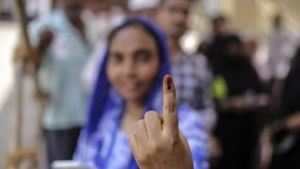डॉ. बाबासाहेब आंबेडकर आणि केरळ दौऱ्याची प्रेरणादायी कथा
डॉ. बाबासाहेब आंबेडकर हे भारतीय राज्यघटनेचे शिल्पकार आणि सामाजिक न्यायाचे योद्धा म्हणून ओळखले जातात. त्यांच्या जीवनात अनेक प्रसंग घडले, ज्यांनी त्यांची सामाजिक समानतेबद्दलची बांधिलकी सिद्ध केली. पण 1936 साली केरळ दौऱ्याशी संबंधित एक कमी ज्ञात घटना त्यांच्या महानतेचे उत्तम उदाहरण आहे.
पार्श्वभूमी: वैकोम सत्याग्रहाचा वारसा
केरळ हे 20व्या शतकाच्या सुरुवातीला जातीय अन्यायाचे केंद्र होते. वैकोम महादेव मंदिराकडे जाणाऱ्या रस्त्यांवर दलित आणि निम्न जातीय हिंदूंना प्रवेश नाकारला जात असे. 1924-25 च्या वैकोम सत्याग्रहाने काही रस्ते खुले केले, पण दलितांना मंदिर प्रवेशाचा संपूर्ण अधिकार मिळवून दिला नाही. बाबासाहेब आंबेडकर या घटनांकडे बारकाईने लक्ष देत होते आणि त्यांना वाटले की केवळ प्रतीकात्मक विजयांपलीकडे जाऊन दलितांनी आपल्या हक्कांसाठी लढा दिला पाहिजे.
आंबेडकरांचा केरळ दौरा
1936 च्या जानेवारी महिन्यात बाबासाहेब केरळला गेले. तेथे पुळाया समाजाने (जे उच्चवर्णीयांद्वारे अस्पृश्य मानले जात) आयोजित केलेल्या संमेलनात त्यांनी भाषण दिले. हे संमेलन एर्नाकुलम येथे आयोजित करण्यात आले होते. बाबासाहेबांचा हा दौरा विशेष होता कारण राष्ट्रीय स्तरावरील दलित नेते म्हणून ते पहिल्यांदा केरळला गेले आणि तिथल्या दलितांना स्वाभिमान व आत्मनिर्भरतेसाठी प्रेरित केले.
प्रभावी भाषण: एक धाडसी कृती
उच्चवर्णीय गटांकडून जोरदार विरोध आणि धमक्या असूनही, एर्नाकुलम येथे बाबासाहेबांचे भाषण प्रभावी ठरले. त्यांनी पुळाया समाजाला फक्त मंदिर प्रवेशासाठी नव्हे, तर संपूर्ण सामाजिक समानतेसाठी लढा देण्याचे आवाहन केले. शिक्षण, आर्थिक स्वावलंबन आणि अन्यायकारक परंपरांशी लढण्यासाठी धैर्य हवे, असे ते म्हणाले.
त्यांचे शब्द अत्यंत प्रेरणादायी होते:
“लढाई फक्त मंदिर प्रवेशासाठी नाही, तर तुमचं समतेचं हक्क मिळवण्यासाठी आहे. तुम्ही कुणाच्याही तुलनेत कमी नाही, आणि तुमचा लढा ही असमानतेची मुळे नष्ट करण्यासाठी असायला हवा.”
या भाषणामुळे दलित समाजाला आपल्या हक्कांची जाणीव झाली. त्यांनी फक्त उच्चवर्णीयांनी दिलेल्या अधिकारांवर समाधान मानण्याऐवजी खऱ्या नागरिकत्वाचा आग्रह धरला.
परिणाम: दलित समाजाला मिळालेली प्रेरणा
बाबासाहेबांच्या केरळ दौऱ्यामुळे तेथील दलित चळवळींना नवीन दिशा मिळाली. त्यांच्या विचारांमुळे 1937 च्या गुरुवायूर सत्याग्रहासारख्या पुढील आंदोलनांना चालना मिळाली, ज्याने सर्व हिंदूंना मंदिर प्रवेशाचा आग्रह धरला. पुढे केरळ सरकारने बाबासाहेबांच्या दौऱ्याला राज्याच्या जातीय समतेच्या धोरणांवर परिणाम करणारा ऐतिहासिक प्रसंग म्हणून मान्यता दिली.
निष्कर्ष: न थांबणाऱ्या धैर्याचे प्रतीक
डॉ. बाबासाहेब आंबेडकरांचा केरळ दौरा त्यांच्या केवळ नेत्याच्या भूमिकेचे नव्हे, तर दूरदृष्टीचा साक्षात्कारही करतो. जीव धोक्यात असल्याची जाणीव असूनही, त्यांनी अत्याचारितांसोबत उभे राहून त्यांना शतकानुशतके चाललेल्या गुलामीतून बाहेर पडण्यासाठी प्रेरित केले. ही कमी ज्ञात कथा बाबासाहेबांच्या व्यापक प्रभावाची आणि सर्वांना न्याय मिळवून देण्याच्या त्यांच्या अथक प्रयत्नांची आठवण करून देते.


















